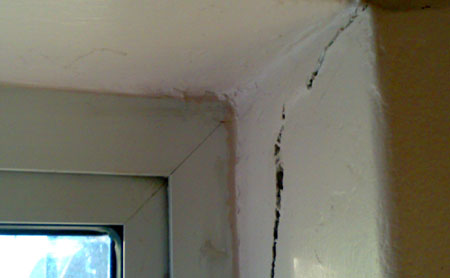When to worry about cracks in walls
Cracks in foundation walls can be of no significance or a major structural defect, which can be expensive to correct. Proper evaluation is therefore very important to determine; (1) If repair work is warranted and, (2) Details for effective repairs.
As a licensed professional engineer, I am called in to evaluate cracked foundation walls frequently. Unfortunately, repairs for defective foundation walls can easily cost thousands. However, much money can also be wasted based on incorrect evaluation by unqualified persons.
Cracks in foundation walls typically occur within several years after a house is built, although there are exceptions (such as tree roots). Owners often do not notice cracks until many years after initial formation. More often a foundation crack becomes a major issue when discovered during a pre-purchase inspection. Cracks are generally considered vertical, horizontal or diagonal (sloped), even though most cracked-wall conditions include all three categories.
Narrow vertical cracks are most often caused by minor settlement or normal shrinkage. Such cracks are not structural defects. Wide vertical cracks (exceeding 3mm in width) may be caused by significant settlement problems that require detailed engineering inspection and evaluation.
Horizontal cracks are much more of a concern than vertical cracks, especially in block foundation walls.
Repairing horizontal cracks
Cracked foundation walls can be permanently repaired, without complete replacement, as long as inward movement is not excessive. The key issue is whether the wall can continue to provide vertical support for the house without risk of severe damage. Inward movement is typically measured relative to base of wall, using a 1.5 metre length spirit level or plumb string-line. Maximum inward movement (deflection) usually occurs at the horizontal crack and near mid-height of the wall.
If inward movement of a cracked foundation wall exceeds 25mm, consideration must be given to complete replacement of the wall. Cost for replacement is typically much greater than cost of bracing. Therefore, having repair work performed before inward movement increases is essential to minimising repair costs.

